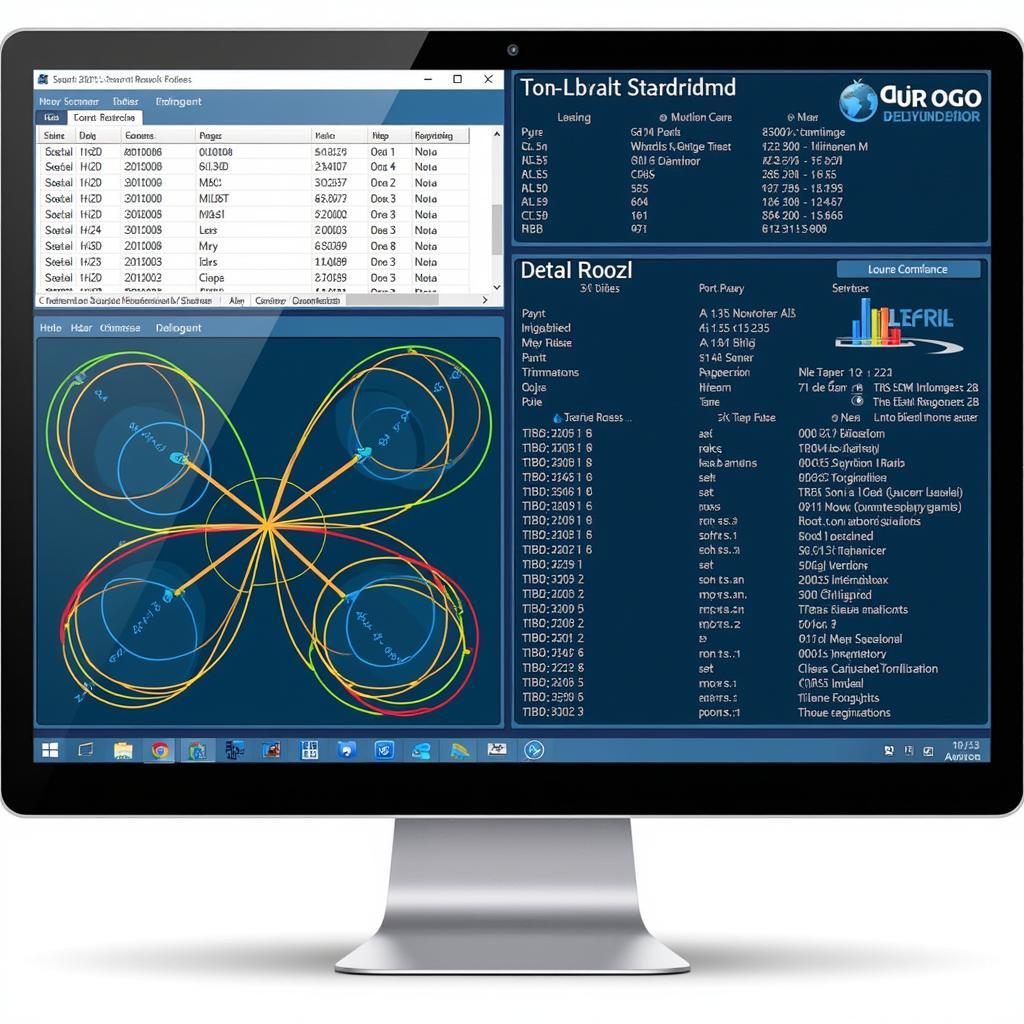Router Port Scanning Tools are essential for anyone who wants to manage their network security effectively. These tools allow you to identify which ports on your router are open and listening for traffic, and which ones are closed. This information can be used to identify potential security vulnerabilities and take steps to mitigate them.
Understanding Router Port Scanning
Before diving into the specifics of router port scanning tools, it’s crucial to understand how they work and why they are important.
What is Port Scanning?
In simple terms, port scanning is like knocking on different doors of a house (your router) to see who answers. Each door represents a port, and the response you receive tells you if a service is running on that port.
Why is Port Scanning Important for My Router?
Your router acts as the gateway between your internal network and the internet. Open ports allow communication, but they can also be exploited by malicious actors if not properly secured. By regularly scanning your router’s ports, you can identify potential vulnerabilities and take corrective action.
Types of Router Port Scanning Tools
There are various router port scanning tools available, each with its strengths and weaknesses. Choosing the right tool depends on your technical expertise and specific requirements.
1. Online Port Scanners
Online port scanners are web-based tools that offer a simple and convenient way to scan your router. They are user-friendly, requiring no downloads or installations.
However, they may have limitations in terms of scanning speed and depth.
2. Nmap
Nmap (Network Mapper) is a powerful and versatile command-line tool favored by security professionals. It offers a wide range of scanning techniques and options for advanced users.
While incredibly powerful, Nmap’s complexity might be overwhelming for beginners.
3. Graphical Network Scanning Tools
Several graphical network scanning tools offer a user-friendly interface while providing advanced features comparable to Nmap. These tools provide visual representations of scan results, making them easier to interpret.
 Graphical Network Scanning Tool Interface
Graphical Network Scanning Tool Interface
They strike a balance between usability and functionality.
Choosing the Right Router Port Scanning Tool
The ideal tool for you depends on your specific needs and technical proficiency.
- For basic checks: Online port scanners are a good starting point.
- For in-depth analysis: Nmap offers unparalleled flexibility and power.
- For a balance of usability and features: Graphical network scanning tools are a solid choice.
How to Use a Router Port Scanning Tool
While the specifics vary depending on the tool, the general process is as follows:
- Choose a tool: Select a router port scanning tool that suits your needs.
- Identify your router’s IP address: This is usually found in your router’s settings or through your operating system’s network settings.
- Input the IP address into the tool: Enter your router’s IP address into the designated field.
- Initiate the scan: Start the scan and allow the tool to analyze your router’s ports.
- Review the results: Analyze the scan results to identify open ports and potential security issues.
Interpreting Port Scan Results
Understanding the output of a port scan is crucial. Here’s a breakdown of common terms:
- Open Port: A service is actively running on this port and accepting connections.
- Closed Port: No service is listening on this port.
- Filtered Port: The tool couldn’t determine the port’s status, often due to firewall rules.
Best Practices for Router Security
Beyond port scanning, implement these best practices to bolster your router’s security:
- Change default credentials: Use strong and unique passwords for your router’s admin panel.
- Enable firewall protection: Activate your router’s built-in firewall or consider a dedicated hardware firewall.
- Regularly update firmware: Keep your router’s firmware up-to-date to patch vulnerabilities.
- Disable unnecessary services: Turn off any services or features you don’t need to minimize potential attack vectors.
tools for vulnerability scanning
Conclusion
Router port scanning tools are invaluable for maintaining a secure network. By understanding how these tools work and implementing best practices, you can proactively identify and mitigate potential security risks to your router and connected devices. Regularly scanning your router’s ports is a crucial step towards a safer online experience.
For professional assistance with router security and vulnerability assessments, contact ScanToolUS at +1 (641) 206-8880 or visit our office at 1615 S Laramie Ave, Cicero, IL 60804, USA.

